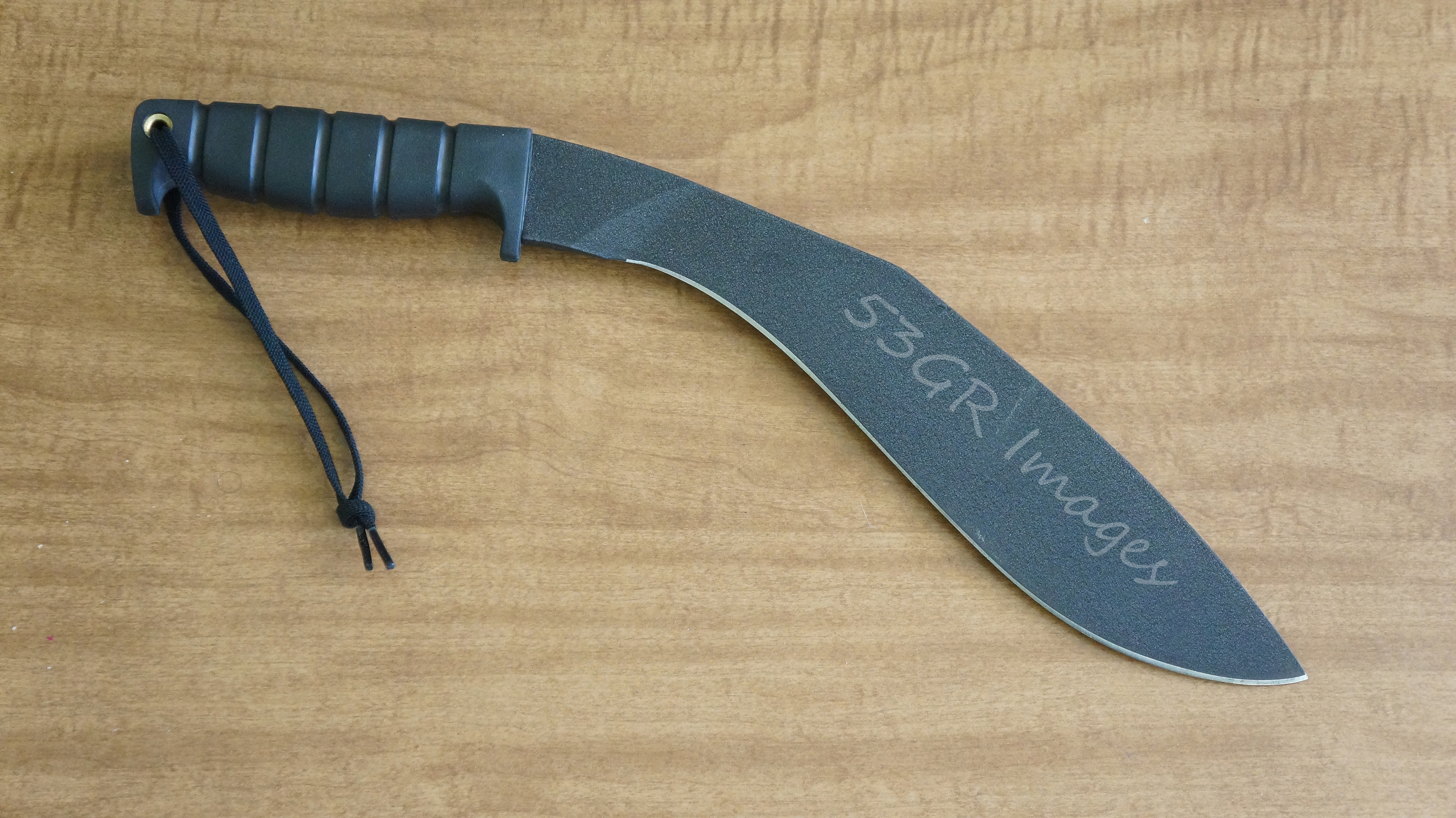I’m a huge fan of the Nepali khukuri (more commonly spelled kukri). I’m also a fan of my Ontario Knife Company Air Force Survival Knife. Knowing OKC to be a good company, I contacted them about their version of the kukri. Soon, an OKC Kukri Knife arrived on my doorstep sharp and ready for use.
The Ontario Knife Company Kukri is not a traditional khukuri, nor should it be judged as such. Rather, it is a hybrid between the khukuri design and an American knife design, such as a Marine Combat Knife.
There are several major differences between the OKC model and traditional, Nepali-made blades.
- Whereas the spine of Nepali khukuris usually measures 7-10 millimeters in thickness, the OKC Kukri measures only about 6.35mm thick.
- The shape of the blade is quite different as well. Though the OKC retains the forward-curving nature of the khukuri, it has a much broader blade (from spine to edge). I assume this was done when looking at some historic khukuris, such as the Mk I, which has a “fatter” blade. The OKC is much fatter than even a Mk 1, but not nearly so bulbous as the Kabar Kukri machete.
- The OKC handle is made of Kraton, rather than wood or water buffalo horn. This handle has a lanyard hole and retention wrist strap included.
- I have never seen a traditional khukuri with a blade coating. The OKC blade is coated with a thin layer of black powder to prevent rust. Only the edge gleams in the light.
- It’s made of 1095 carbon steel, the same material used to make the Aircrew Survival Egress knife. Nepalis traditionally use spring steel from auto leaf springs.

Surprisingly, the OKC Kukri weighs in at 19.7oz while my sirupate weighs only 18.oz. The weight must come from the slightly longer length, larger profile and heavier handle. Both are quite easy to pack on your hip when hiking through the woods. On the other hand, its reduced weight means that extra effort must be made when chopping through thick vegetation or when splitting small pieces of wood.
The coating on the blade is surprisingly resilient. Though I’ve used the OKC Kukri to slice poultry, clear brush and even chop small branches for kindling, the coating has streaked a bit, but not chipped at all. The blade has remained sharp and there is no damage the spine despite occasionally batoning (using the blade as a splitting wedge while smacking it along the spine with a big piece of wood).
Okay, so there is some chipping of the coating along the spine of the blade. While I was batoning the Kukri into a tree branch, I decided it would be a good idea to use a large rock to pound the blade. As it turns out, this was not a very intelligent idea if one wants to preserve the tool.

I’m not a fan of the sheath. While I do appreciate the innovative snap design (which allows a one-handed draw), the rivets tore through the nylon belt strap within a couple of weeks. This is discouraging for an otherwise very handy camping tool.
Opinion
The balance of the OKC is excellent and the handle feels quite natural in my hand. The sheath is a bit of a disappointment, but I’ll be taking it to an alterations shop in the hope of permanently attaching it to a surplus drop-leg holster extender. This should resolve my problem with the sheath and allow me to securely attach this blade to any MOLLE platform, including a warbelt or even an armor carrier.
-By Allen Cosby
Latest posts by 53gr (see all)
- H&H Medical: H Bandage and Thin H Bandage – January 2, 2020
- S&W M&P M2.0 Series – January 9, 2017
- SIG Sauer P938 – October 19, 2016

Leave a Reply